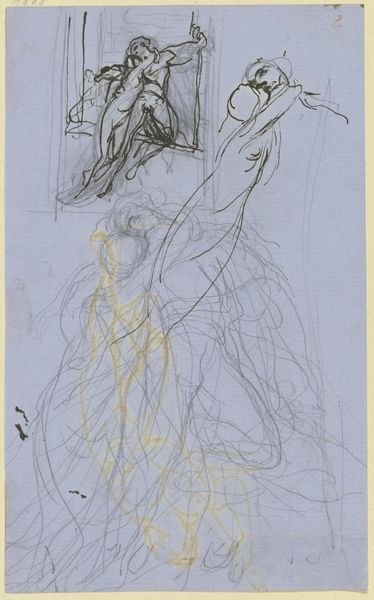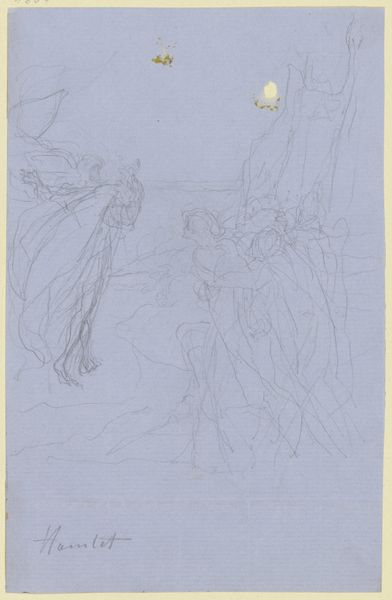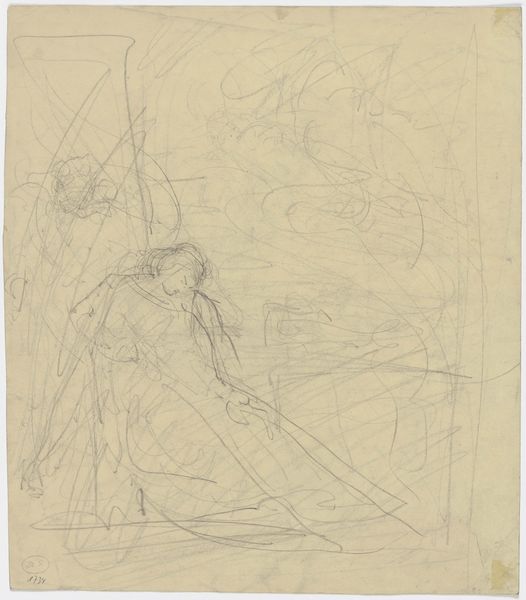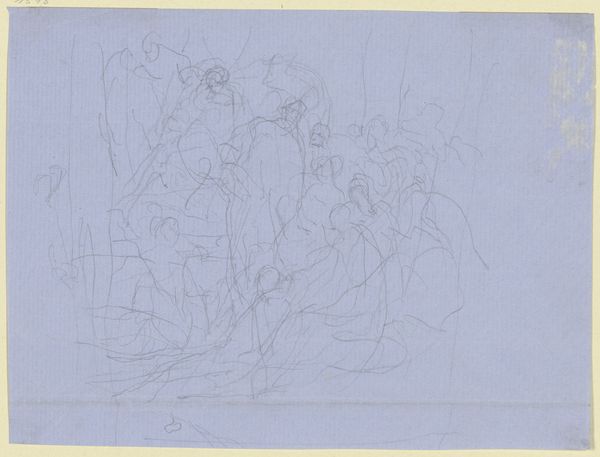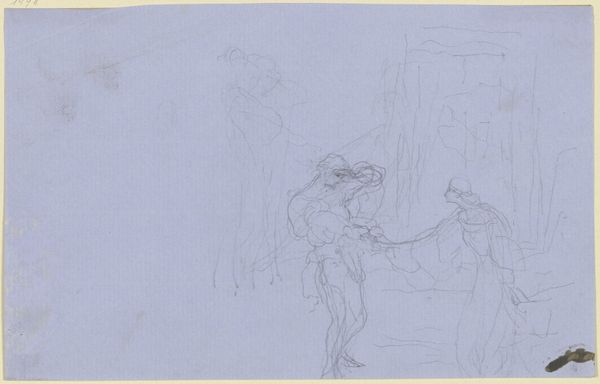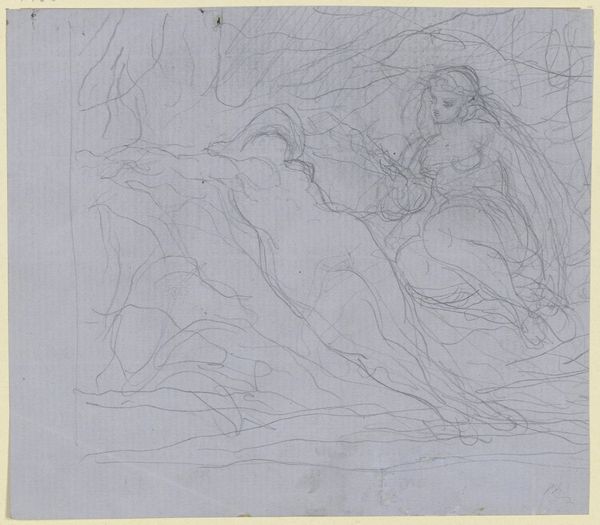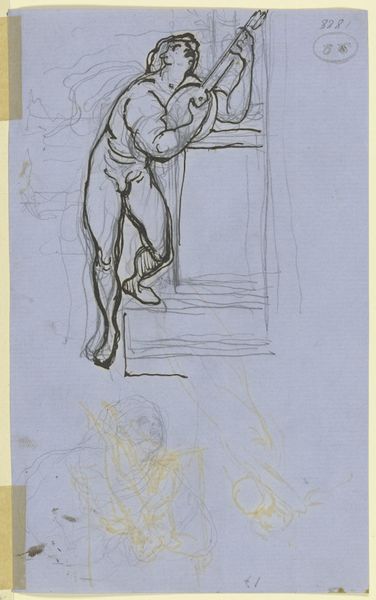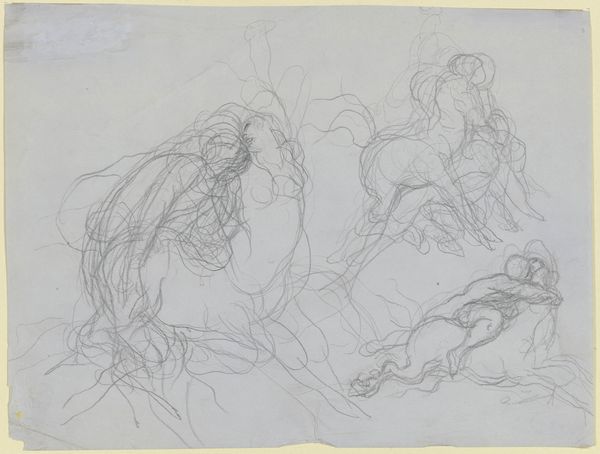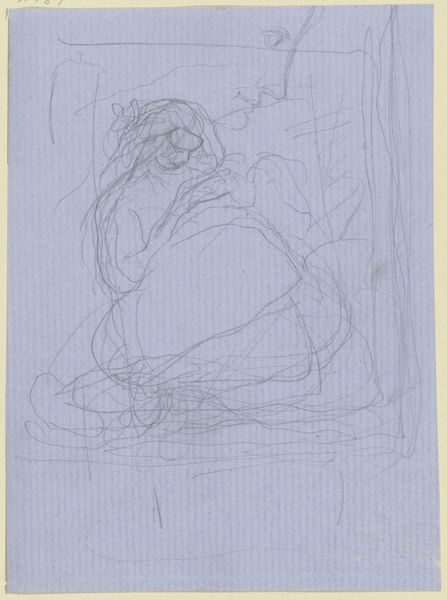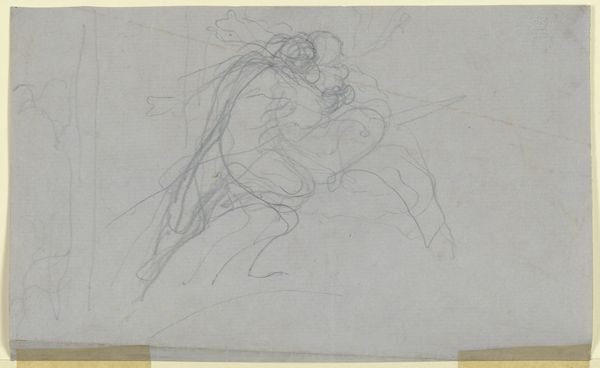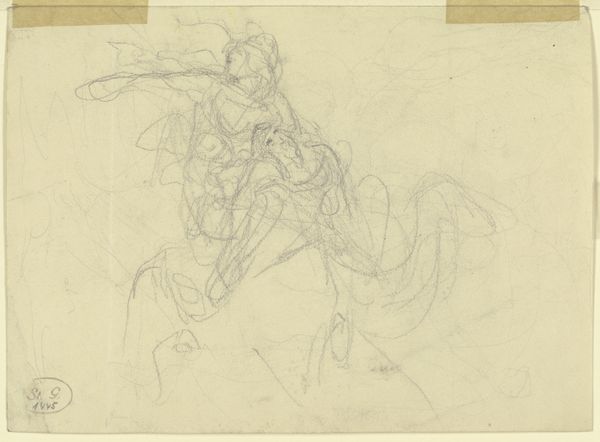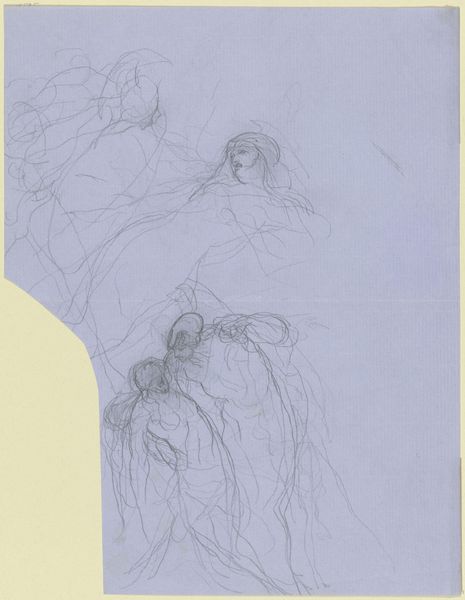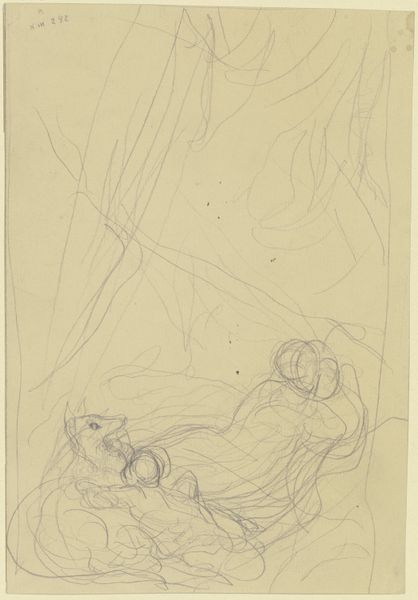
Francesca und Paolo, gemeinsam im zweiten Höllenkreis schwebend, unten rechts der klagende Dante, von Vergil getröstet
0:00
0:00
drawing, paper, pencil
#
drawing
#
16_19th-century
#
figuration
#
paper
#
romanticism
#
pencil
#
history-painting
Copyright: Public Domain
Curator: Victor Müller's pencil drawing captures a scene titled "Francesca and Paolo, together floating in the second circle of Hell, below right, the lamenting Dante, comforted by Virgil." It’s housed here at the Städel Museum. Editor: What strikes me immediately is the raw emotionality, even in a preliminary sketch. The barely-there lines convey such anguish and swirling torment. Curator: Absolutely. Romanticism reveled in the depiction of intense emotion, often drawn from literary sources, as is the case here, representing an episode from Dante’s Inferno. Notice how Müller uses swirling lines to evoke a sense of relentless, unending movement. That represents the eternal storm that imprisons these lovers in Hell. Editor: I find it compelling how the bodies of Francesca and Paolo seem intertwined yet separate, suggesting their bond and eternal punishment. Their love becomes the source of their torment, eternally blown around. I wonder how Victorian audiences would have responded to this treatment of female desire and its consequences? It reflects the tight constraints around female sexuality in the 19th century, perhaps? Curator: Undeniably. These figures—Francesca in particular—became iconic during this period. In mythology and literature, a forbidden kiss often signals an inevitable descent—moral, spiritual, and, as shown here, even physical, a sort of symbol set. Editor: That speaks to the artwork's broader implications too, touching on issues of morality, societal expectations, and the complex ways love can be both liberating and destructive, depending on your gender, status, race, time period… Curator: Very well. Beyond the tragic romance and moral judgement, though, it is interesting to me how the depiction follows existing archetypes, creating images that reflect deeper anxieties about transgression. Editor: It feels timeless in its rawness and universal condemnation, unfortunately. A stark depiction of how patriarchal structures punish female desire and freedom, unfortunately echoing realities still faced today. Curator: Perhaps. A reminder that art can both reflect and question, mirroring our history. Editor: Precisely, forcing us to consider what has changed, what hasn’t, and where we need to go from here.
Comments
No comments
Be the first to comment and join the conversation on the ultimate creative platform.
